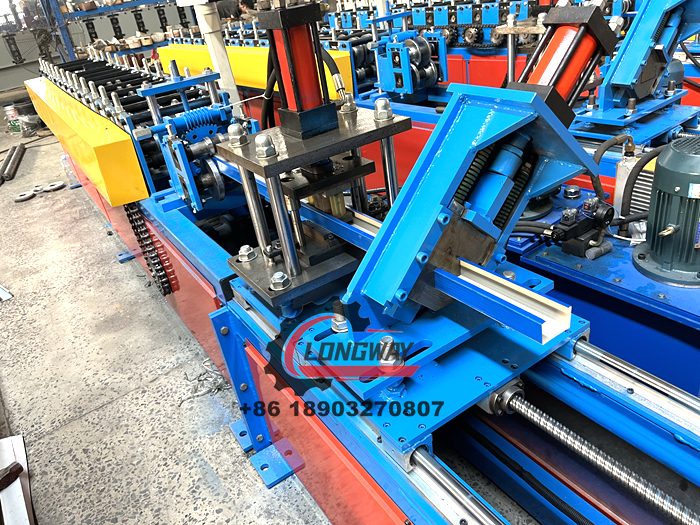light gauge steel roll forming machine factory
Understanding Light Gauge Steel Roll Forming Machines A Factory Perspective
In the construction and manufacturing industries, the demand for durable and efficient building materials has led to an increasing preference for light gauge steel. As a material renowned for its strength, versatility, and cost-effectiveness, light gauge steel has become a popular choice for a wide array of applications, from residential and commercial buildings to industrial structures. At the heart of its fabrication lies the light gauge steel roll forming machine, an essential tool in the modern factory setup.
What is Light Gauge Steel?
Light gauge steel refers to steel sections that have a thickness typically less than 3mm. This type of steel is often used to create framing, walls, and other structural elements that require a balance between weight and strength. Its lightweight nature reduces the overall load on buildings and can lead to reduced material costs, transportation costs, and ease of handling.
The Role of Roll Forming Machines
Roll forming machines are specialized equipment designed to convert flat sheets or strips of metal into specific shapes by passing them through a series of rollers. These machines can create a wide range of profiles like C-sections, Z-sections, and U-channels, which are commonly used in construction. The process involves continuous bending of the metal at room temperature, allowing manufacturers to produce uniform and precise components efficiently.
Key Features of Light Gauge Steel Roll Forming Machines
1. Precision Engineering Modern roll forming machines are designed with high precision and tolerances to ensure the produced steel components meet specific engineering requirements. This is crucial for structural integrity in building applications.
2. Customizability Different construction projects may require different profiles and dimensions. Light gauge steel roll forming machines can be custom-built or adjusted to produce various shapes and sizes, catering to the specific needs of each project.
3. Speed and Efficiency These machines are capable of producing large volumes of steel components quickly, which significantly increases production rates and reduces lead times. This efficiency is pivotal in meeting tight construction schedules.
light gauge steel roll forming machine factory

4. Automation With advancements in technology, many roll forming machines are now automated, featuring computer-controlled systems that optimize the production process. Automation can enhance accuracy, reduce material waste, and lower labor costs.
5. Durability and Maintenance Quality roll forming machines are built to withstand the rigors of continuous operation in a factory setting. Regular maintenance schedules can further extend the lifespan of the equipment, ensuring ongoing reliability.
The Manufacturing Process
The manufacturing process of light gauge steel using roll forming machines generally involves several key stages
1. Material Preparation Steel coils are prepared and fed into the machine. These coils can be pre-galvanized or coated to enhance corrosion resistance and durability.
2. Roll Forming The coils pass through a series of rollers that gradually shape the steel into the desired profile. The process is continuous, with the machine operating at varying speeds based on the complexity of the profile.
3. Cutting and Finishing Once the desired length is achieved, the steel profiles are cut to size. Additional processes, such as punching holes or adding notches, can be performed depending on the application.
4. Quality Control Rigorous quality checks are essential throughout the process. This includes measuring dimensions, inspecting finish quality, and ensuring the strength of the processed steel profiles.
Conclusion
In an era where efficiency and sustainability are paramount, light gauge steel roll forming machines represent a vital innovation in the manufacturing landscape. These machines not only optimize the production of steel components but also contribute to the overall sustainability of construction practices by enabling the use of lighter, yet durable materials. As factories invest in advanced roll forming technology, the future of building construction looks promising, with the potential for enhanced structures that meet the evolving demands of the industry. The growth of this sector exemplifies how technology continues to shape the way we build and design our environments.
-
Roof Panel Machines: Buying Guide, Types, and PricingNewsJul.04, 2025
-
Purlin Machines: Types, Features, and Pricing GuideNewsJul.04, 2025
-
Metal Embossing Machines: Types, Applications, and Buying GuideNewsJul.04, 2025
-
Gutter Machines: Features, Types, and Cost BreakdownNewsJul.04, 2025
-
Cut to Length Line: Overview, Equipment, and Buying GuideNewsJul.04, 2025
-
Auto Stacker: Features, Applications, and Cost BreakdownNewsJul.04, 2025
-
Top Drywall Profile Machine Models for SaleNewsJun.05, 2025








